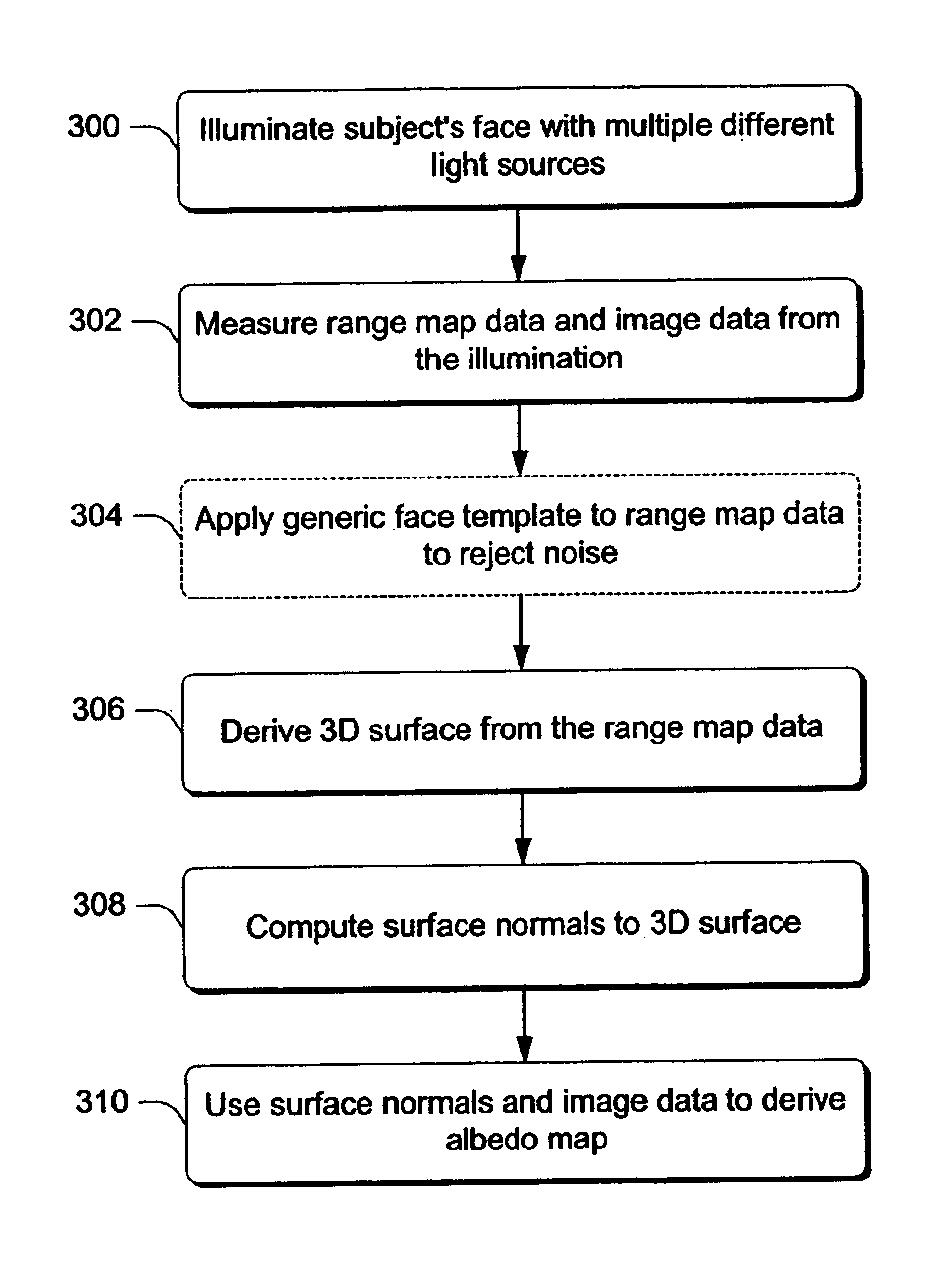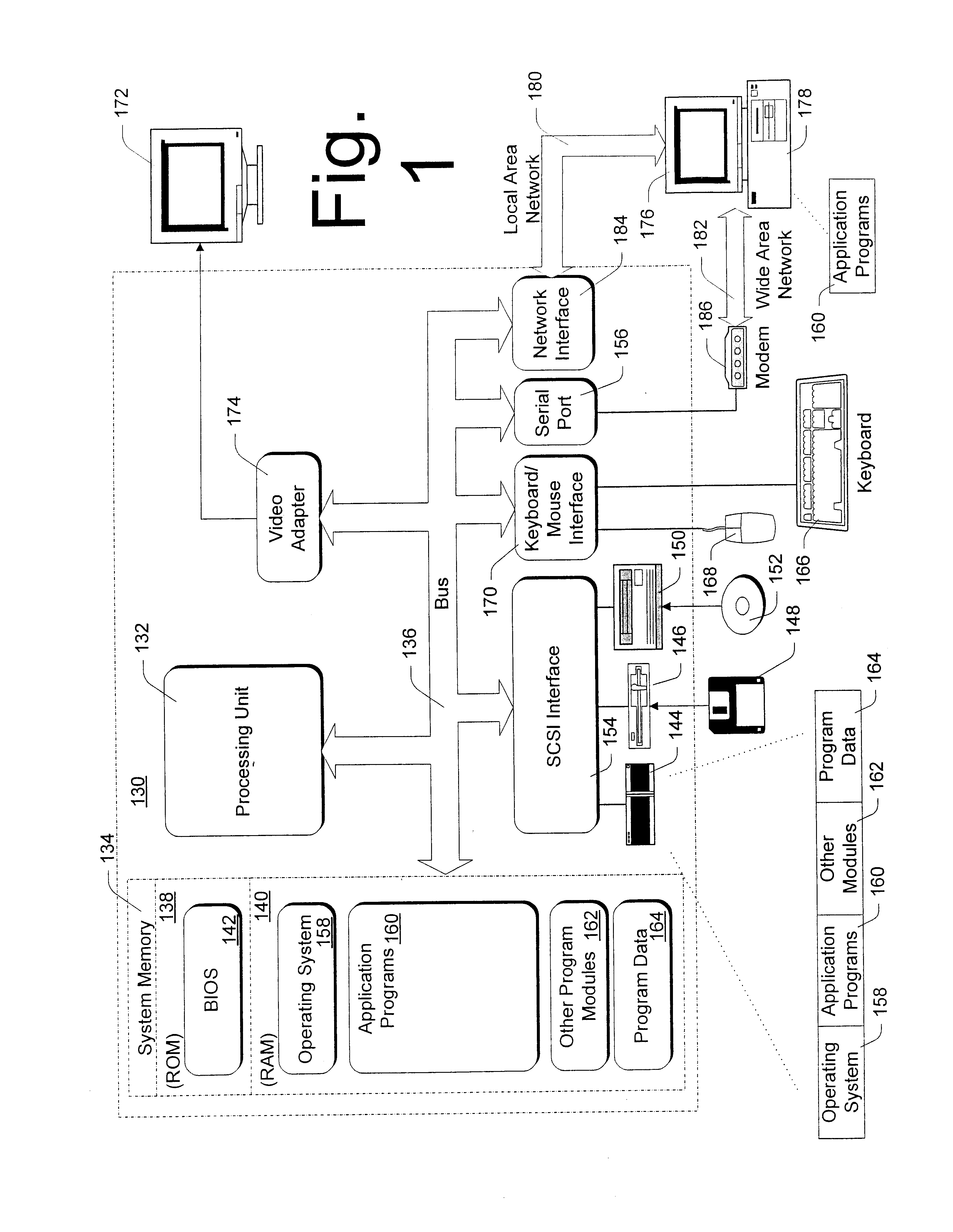Facial image processing methods and systems
a facial image and processing method technology, applied in the field of facial image processing methods and systems, can solve the problems of not well modeled phong models, difficult to model and render realistic faces and facial expressions, and difficult to achieve the effect of eliminating the influence of ambient sources of illumination
- Summary
- Abstract
- Description
- Claims
- Application Information
AI Technical Summary
Benefits of technology
Problems solved by technology
Method used
Image
Examples
Embodiment Construction
Overview
Rendering realistic faces and facial expressions requires very good models for the reflectance of skin and the motion of the face. Described below are methods and techniques for modeling, animating, and rendering a face using measured data for geometry, motion, and reflectance that realistically reproduces the appearance of a particular person's face and facial expressions. Because a complete model is built that includes geometry and bi-directional reflectance, the face can be rendered under any illumination and viewing conditions. The described modeling systems and methods create structured face models with correspondences across different faces, which provide a foundation for a variety of facial animation operations.
The inventive embodiments discussed below touch upon each of the parts of the face modeling process. To create a structured, consistent representation of geometry that forms the basis for a face model and that provides a foundation for many further face modelin...
PUM
 Login to View More
Login to View More Abstract
Description
Claims
Application Information
 Login to View More
Login to View More - R&D
- Intellectual Property
- Life Sciences
- Materials
- Tech Scout
- Unparalleled Data Quality
- Higher Quality Content
- 60% Fewer Hallucinations
Browse by: Latest US Patents, China's latest patents, Technical Efficacy Thesaurus, Application Domain, Technology Topic, Popular Technical Reports.
© 2025 PatSnap. All rights reserved.Legal|Privacy policy|Modern Slavery Act Transparency Statement|Sitemap|About US| Contact US: help@patsnap.com



